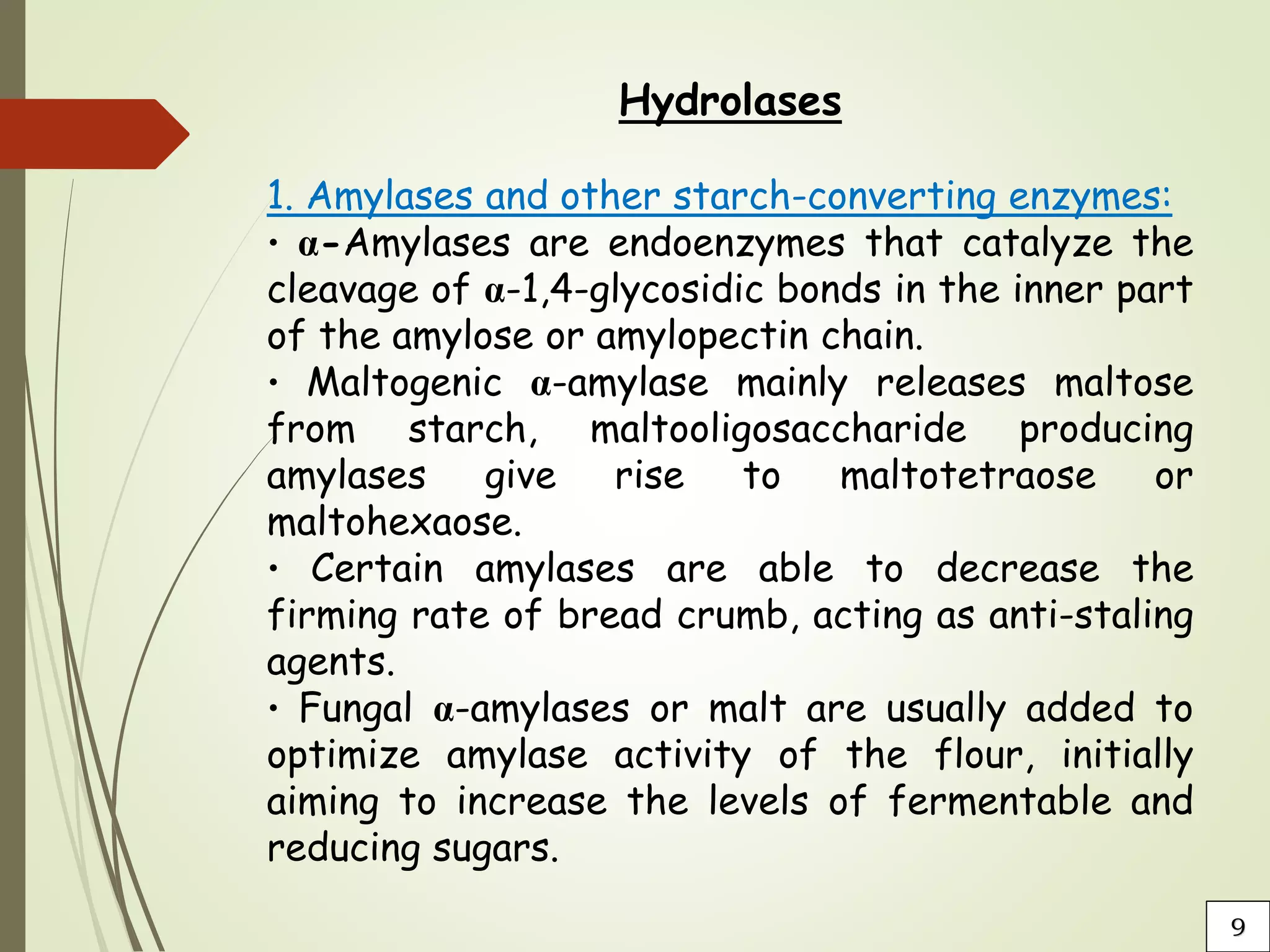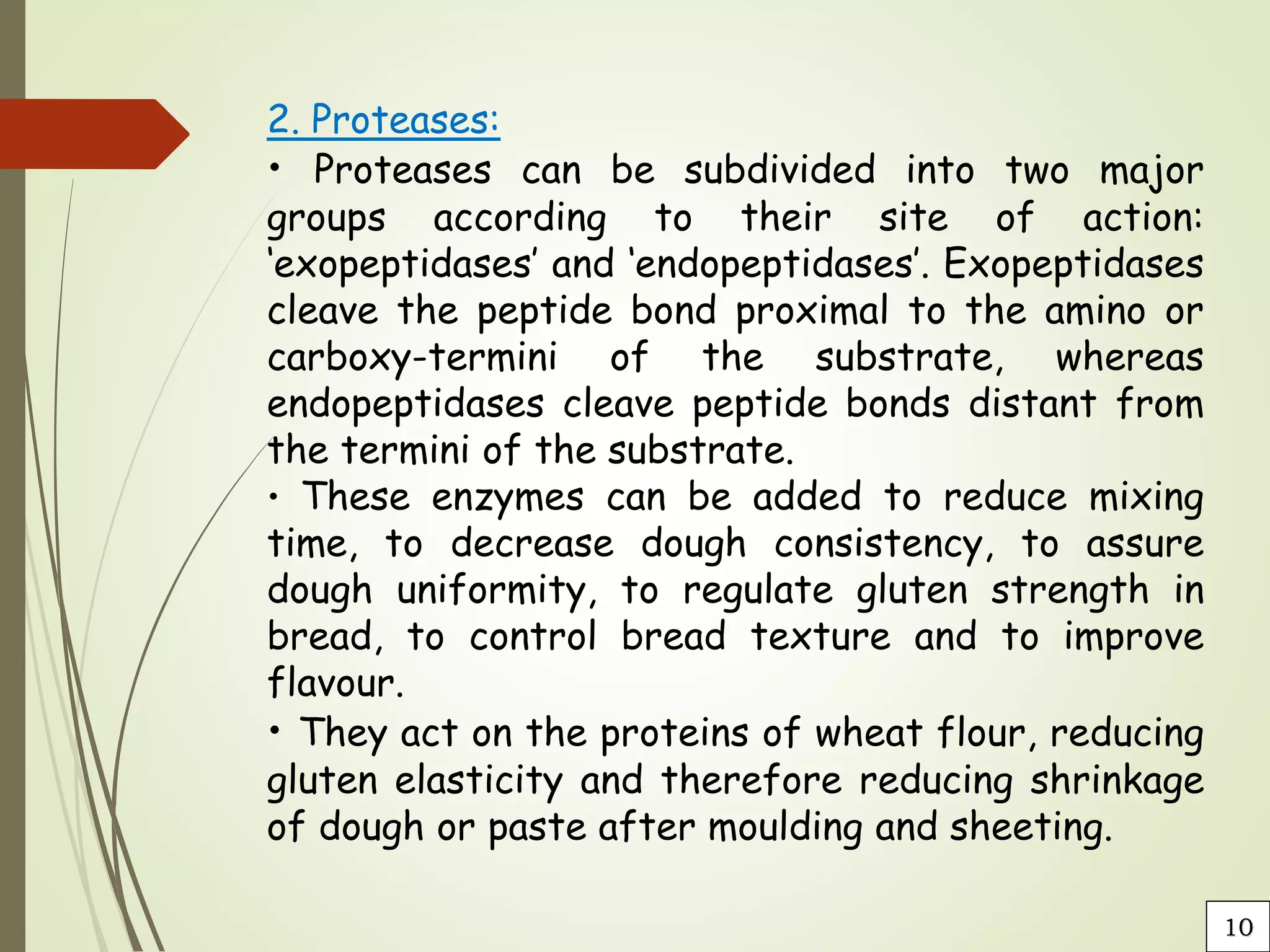Enzymes serve several important functions in the baking industry. Amylases, xylanases, proteases, and other enzymes are used to modify dough rheology and improve characteristics like crumb softness and volume. Specifically, amylases help release sugars from starch for fermentation, while xylanases and proteases alter gluten strength and texture. Looking ahead, directed evolution may help design new enzymes to develop gluten-free or high-fiber baked goods.





















